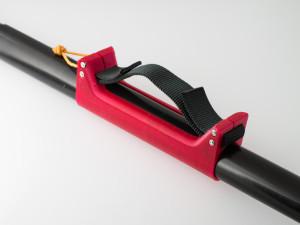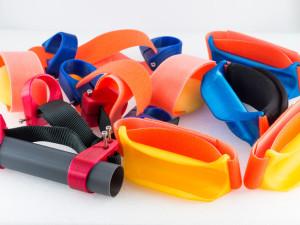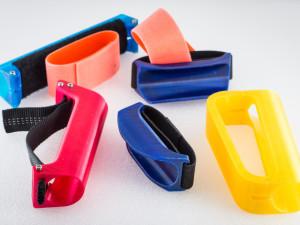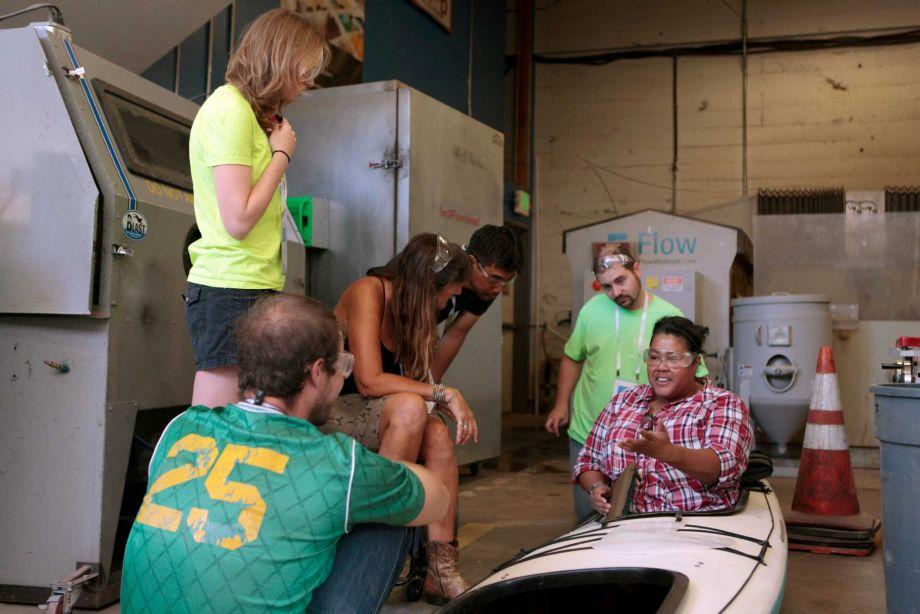 Kayaking is something I’ve never tried before. I have a few relatives who are pretty serious about it as a sport, but I’ve only ever gone canoeing, and that usually involves bumping into rocks and somehow getting turned completely backwards. I believe that kayaking, for me, would be an exercise in going in circles. I do know, however, from talking to people who do it regularly, that kayaking is a workout that engages the entire body, and can be a meditative experience as well. It’s a skill that takes practice, but, I’m told, is an incredibly rewarding one.
Kayaking is something I’ve never tried before. I have a few relatives who are pretty serious about it as a sport, but I’ve only ever gone canoeing, and that usually involves bumping into rocks and somehow getting turned completely backwards. I believe that kayaking, for me, would be an exercise in going in circles. I do know, however, from talking to people who do it regularly, that kayaking is a workout that engages the entire body, and can be a meditative experience as well. It’s a skill that takes practice, but, I’m told, is an incredibly rewarding one.
Designer and Thingiverse user Walter Hsiao is a huge fan of kayaking, and has been working on creating assistive devices to make it more accessible to people with disabilities. Currently, he is working on a series of 3D printed assistive paddling grips for kayakers with disabilities, to allow them more control and better grip. Hsiao describes the assistive grips as a work in progress, and has printed several versions so far, using one-inch webbing and Velcro One-Wrap ties to secure them. Eventually he hopes to use ties that can be more easily tightened or integrated into gloves. He hasn’t perfected the design yet, but he is experimenting.
“These are a continuing work in progress and none of these work as well as I would like,” says Hsiao. “Some of the designs may be effective for casual paddling but I don’t think they’re adequate for open ocean kayaking.”
The paddling grip design is not Hsiao’s first venture into the creation of assistive devices. In September, he participated in the Bay Area Makeathon, which placed its focus this year on the invention of devices to help people with disabilities. Hsiao’s team worked on a project that endeavored to adapt a kayak and paddle for use by a quadriplegic.
He has worked with Environmental Traveling Companions, an organization that makes outdoor sports and travel accessible to disadvantaged youth and people with disabilities. His website, where he shares his experiments and experiences with 3D printing, is full of designs he has created to complement his passion for backpacking and other outdoor sports.
Hsiao’s first iterations of the assistive paddling grip designs were printed on a RigidBot printer, which he used for all of his designs until he built his own Eustathios printer. He has been using PETG filament for the grips, and advises that they may not work with other types of filaments. Each was designed to fit Werner carbon shaft paddles.
The files can be downloaded from Thingiverse, and the original files are also available on Onshape. Although Hsiao isn’t yet satisfied with his paddling grip design, he certainly seems to have the knowledge, determination and skill to perfect it before long.
What are your thoughts on yet another creative way for 3D printing to help the disabled? Let us know in the 3D Printed Assistive Paddle Grip forum thread on 3DPB.com.
Subscribe to Our Email Newsletter
Stay up-to-date on all the latest news from the 3D printing industry and receive information and offers from third party vendors.
You May Also Like
Profiling a Construction 3D Printing Pioneer: US Army Corps of Engineers’ Megan Kreiger
The world of construction 3D printing is still so new that the true experts can probably be counted on two hands. Among them is Megan Kreiger, Portfolio Manager of Additive...
US Army Corps of Engineers Taps Lincoln Electric & Eaton for Largest 3D Printed US Civil Works Part
The Soo Locks sit on the US-Canadian border, enabling maritime travel between Lake Superior and Lake Huron, from which ships can reach the rest of the Great Lakes. Crafts carrying...
Construction 3D Printing CEO Reflects on Being Female in Construction
Natalie Wadley, CEO of ChangeMaker3D, could hear the words of her daughter sitting next to her resounding in her head. “Mum, MUM, you’ve won!” Wadley had just won the prestigious...
1Print to Commercialize 3D Printed Coastal Resilience Solutions
1Print, a company that specializes in deploying additive construction (AC) for infrastructure projects, has entered an agreement with the University of Miami (UM) to accelerate commercialization of the SEAHIVE shoreline...






























